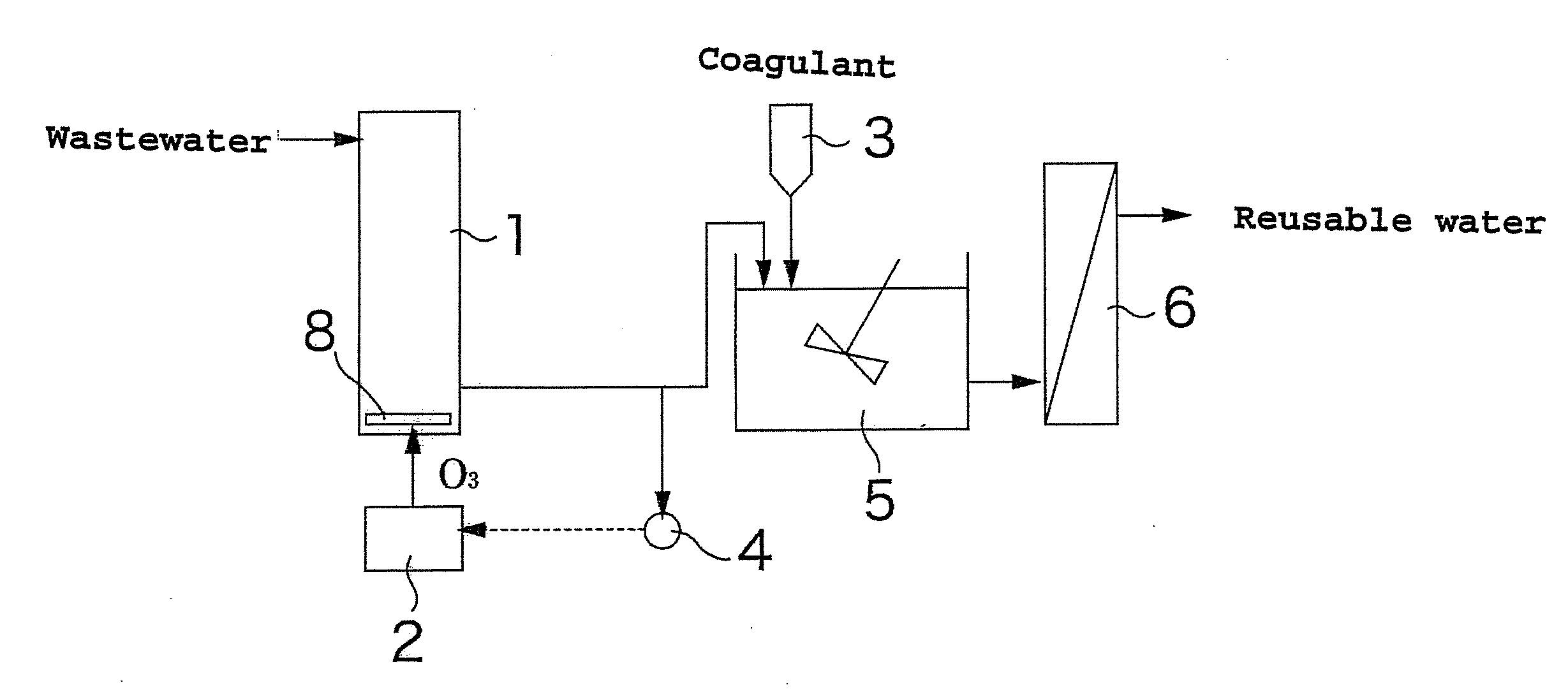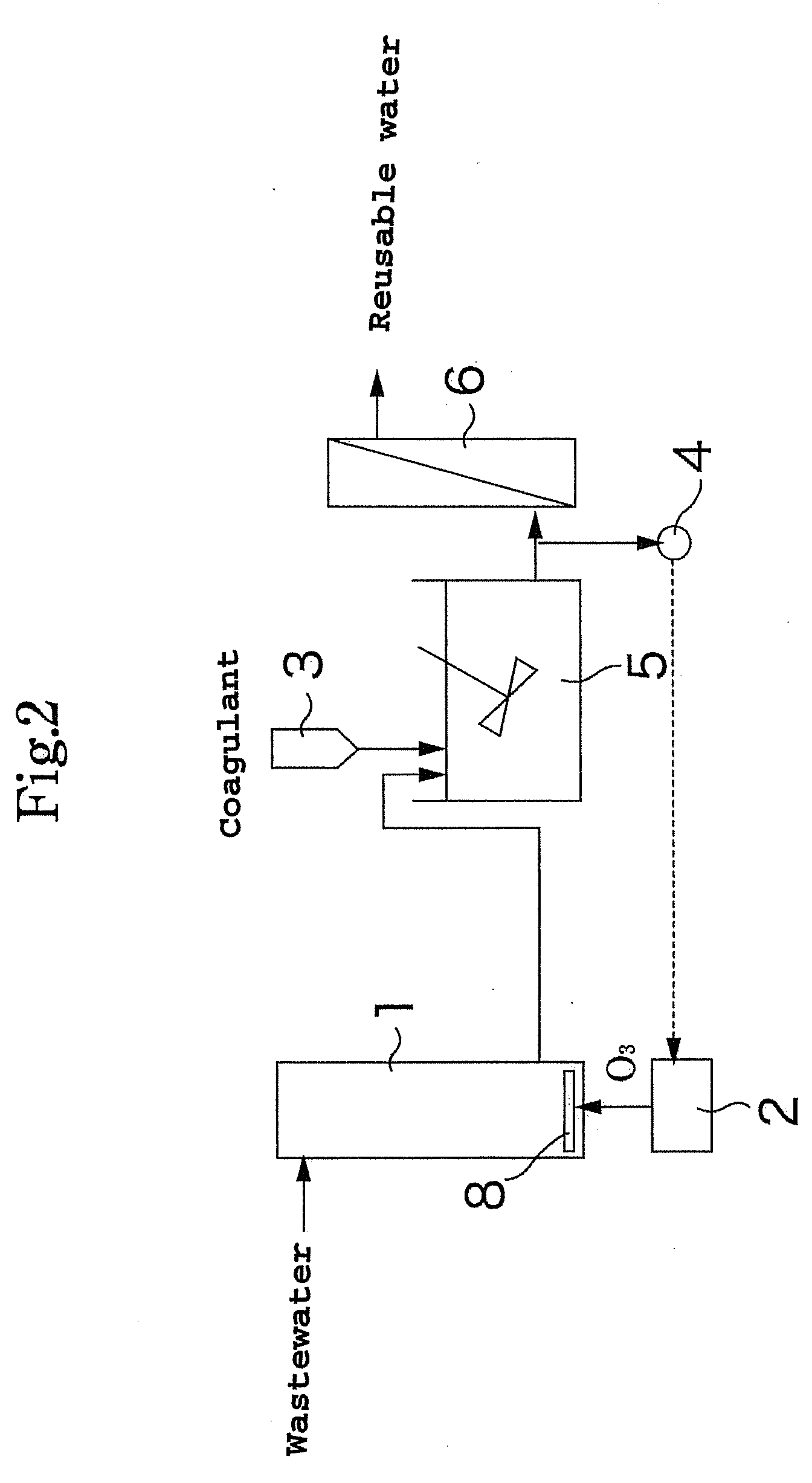Method for recycling wastewater
a technology for recycling wastewater and wastewater, applied in the nature of treatment water, multi-stage water/sewage treatment, membranes, etc., can solve the problems of high running cost, inability to work, and inability to add large amounts of ozone, so as to improve coagulation properties and prevent clogging of the filtering surface of separation membranes , the running cost of ozone generation can be significantly reduced
- Summary
- Abstract
- Description
- Claims
- Application Information
AI Technical Summary
Benefits of technology
Problems solved by technology
Method used
Image
Examples
examples
[0033]According to the flow shown in FIG. 1, experiments of producing reusable water from treated sewage were performed. Each residence time in the ozone contact column was 10 minutes. In Example 1, the ozone generator was controlled so as to keep a concentration of dissolved ozone before membrane-filtration within the range of 0.03 to 0.04 mg / L. In Example 2, the ozone generator was controlled so as to keep a concentration of dissolved ozone before membrane-filtration to 0.4 mg / L. In Example 3, the ozone generator was controlled so as to keep a concentration of dissolved ozone before membrane-filtration to 0.7 mg / L. In each of Examples, a coagulant used was PACl, which was added to wastewater so as to be a concentration of 2 mg-Al / L. A separation membrane used was a monolithic ceramic membrane having a fine pore diameter of 0.1 μm. For comparison, experiments were performed in the case of without ozone (Comparative Example 1) and of an ozone concentration of 1.5 mg / L (Comparative E...
PUM
| Property | Measurement | Unit |
|---|---|---|
| concentration | aaaaa | aaaaa |
| concentration | aaaaa | aaaaa |
| concentration | aaaaa | aaaaa |
Abstract
Description
Claims
Application Information
 Login to View More
Login to View More - R&D
- Intellectual Property
- Life Sciences
- Materials
- Tech Scout
- Unparalleled Data Quality
- Higher Quality Content
- 60% Fewer Hallucinations
Browse by: Latest US Patents, China's latest patents, Technical Efficacy Thesaurus, Application Domain, Technology Topic, Popular Technical Reports.
© 2025 PatSnap. All rights reserved.Legal|Privacy policy|Modern Slavery Act Transparency Statement|Sitemap|About US| Contact US: help@patsnap.com



